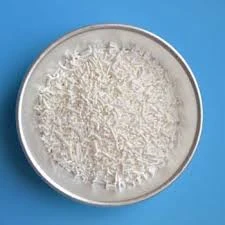
indirect food additives
Understanding Indirect Food Additives A Closer Look
In our modern food system, the term food additives often brings to mind the vibrant colors and distinctive flavors that enhance our eating experience. However, not all food additives are as straightforward as they seem. Among them, indirect food additives play a pivotal yet often overlooked role in the safety and quality of our food.
Indirect food additives are substances that are not intentionally added to food but may still end up in food products during processing, packaging, or storage. They can originate from a variety of sources, including materials used for food contact surfaces, processing aids, and even contaminants that may unintentionally infiltrate food products. Understanding the significance of indirect food additives is essential for consumers, manufacturers, and regulators alike.
One of the most common sources of indirect food additives is the packaging materials used to contain food products. Many packaging materials, such as plastics, metals, and coatings, can leach chemicals into food, especially under high-temperature conditions. For example, bisphenol A (BPA), commonly found in polycarbonate plastics and epoxy resins, has raised concerns over its potential to migrate into food and beverages. Research has linked BPA exposure to various health issues, prompting regulatory agencies to restrict its use in food-contact materials.
Moreover, indirect food additives can also come from the food processing environment. For instance, lubricants used in food processing machinery might contain substances that come into contact with the food. Similarly, cleaning agents and sanitizers employed to ensure sanitary conditions can leave residues that might inadvertently end up in food products. The food industry is regulated to minimize the risk of introducing these indirect additives, but the possibility still exists.
indirect food additives

Another crucial area of concern relates to the cross-contamination that may occur during food processing. For instance, allergens or other undesirable substances can transfer from one food item to another if proper precautions are not taken. This is particularly critical in facilities that process both gluten-free and gluten-containing products, which can lead to serious health repercussions for individuals with gluten intolerance.
Regulatory bodies, including the U.S. Food and Drug Administration (FDA) and the European Food Safety Authority (EFSA), play an integral role in overseeing the use of indirect food additives. They establish safety guidelines and conduct thorough assessments to ensure that any substances that could potentially enter the food supply are safe for human consumption. Manufacturers are required to comply with these regulations and ensure that their processes minimize the risk of indirect additives contaminating their products.
As consumers, it is vital to stay informed about the potential presence of indirect food additives in our food. Reading labels and being aware of the materials used in food packaging can help make more informed choices. Furthermore, supporting manufacturers that prioritize safety and transparency can encourage industry-wide practices that safeguard food quality and consumer health.
In conclusion, while indirect food additives may not be as visible as traditional additives, their impact on food safety and quality is significant. As technology and practices evolve, ongoing research and vigilance will be crucial in minimizing risks associated with these additives. By fostering awareness and advocacy, we can contribute to a safer food supply and ensure that our meals are not only delicious but also free from unnecessary contaminants.
-
Pure Sodium Dichloroisocyanurate Dihydrate | Powerful DisinfectantNewsAug.29,2025
-
Industrial Chemicals: Quality & Purity for Every IndustryNewsAug.28,2025
-
Nitrile Rubber Honoring Strict Production StandardsNewsAug.22,2025
-
Aspartame Ingredients Honoring Food Safety ValuesNewsAug.22,2025
-
Fertilizer for Balanced Plant NutritionNewsAug.22,2025
-
Cyanide Gold Processing with High Purity AdditivesNewsAug.22,2025
-
Formic Acid in Textile Dyeing ApplicationsNewsAug.22,2025
Hebei Tenger Chemical Technology Co., Ltd. focuses on the chemical industry and is committed to the export service of chemical raw materials.
-

view more DiethanolisopropanolamineIn the ever-growing field of chemical solutions, diethanolisopropanolamine (DEIPA) stands out as a versatile and important compound. Due to its unique chemical structure and properties, DEIPA is of interest to various industries including construction, personal care, and agriculture. -

view more TriisopropanolamineTriisopropanolamine (TIPA) alkanol amine substance, is a kind of alcohol amine compound with amino and alcohol hydroxyl, and because of its molecules contains both amino and hydroxyl. -

view more Tetramethyl Thiuram DisulfideTetramethyl thiuram disulfide, also known as TMTD, is a white to light-yellow powder with a distinct sulfur-like odor. It is soluble in organic solvents such as benzene, acetone, and ethyl acetate, making it highly versatile for use in different formulations. TMTD is known for its excellent vulcanization acceleration properties, which makes it a key ingredient in the production of rubber products. Additionally, it acts as an effective fungicide and bactericide, making it valuable in agricultural applications. Its high purity and stability ensure consistent performance, making it a preferred choice for manufacturers across various industries.





